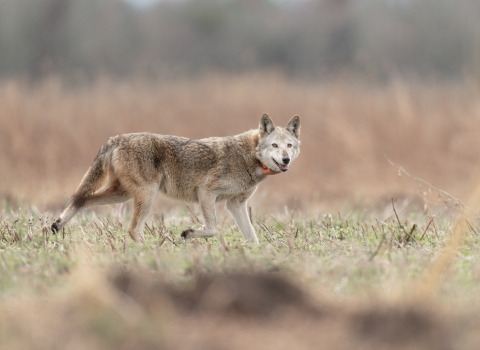HONOLULU — Sea turtle nesting season has begun! Federal and state agencies are asking people to lookout for honu (Hawaiian green), honuʻea (Hawaiian hawksbill), and olive ridley turtles during the 2023 sea turtle nesting season. The people of Hawaiʻi can help by reporting any observations of nesting sea turtles, unusually large ‘pits’ in the sand (which may indicate a nest), or any baby turtles (or hatchlings) found along the beaches of Hawaiʻi.
Sea turtles nest on Hawaiʻi beaches from mid-April through September, however, nesting can extend into December. People can ensure that they successfully lay their eggs by keeping a respectful distance of at least 10 feet from sea turtles and their nests. And then quickly report any nesting activity to the NOAA Fisheries Marine Wildlife Hotline at 1-888-256-9840.
“Two of the most important things we can do for sea turtles is give them space when they are on land and keep lights from being seen from the beach,” said Joy Browning, Pacific Islands Fish and Wildlife biologist. “Most activity associated with nesting occurs at night. Lights that can been seen from the beach can cause hatchlings that just emerged from the nest to become disoriented. A disoriented turtle may wander inland or become trapped, unable to locate the ocean. This uses up precious calories, lowering their chances of survival. While we don’t know how many turtles will actively nest along Hawaiʻi beaches this year, both state and federal agencies are gearing up to work with our community volunteers to locate and monitor sea turtle nests.”
Honu are known to use beaches state-wide, but nest mostly on Lalo (French Frigate Shoals) in Papahānaumokuākea Marine National Monument. Honu‘ea nest primarily on the islands of Hawaiʻi, Maui, and Moloka‘i. Olive ridley nests have been found on the islands of Hawaiʻi, Maui, and Oʻahu, but are extremely rare.
Nesting activity can be difficult to identify because sea turtles both nest and bask on Hawaiʻi beaches. Here are a few tips on how to tell if a turtle is nesting or basking:
Nesting Behaviors:
- Sea turtles typically lay their nest at night near or under coastal vegetation, and well above the high tide line.
- Sea turtles digging with their rear flippers, then departing the beach is likely an indicator of nesting activity.
Basking Behaviors:
- Basking sea turtles are usually found closer to the water (near the high tide line) both during the day and at night.
- Sea turtles may move sand with their front flippers when basking, but may settle down and go to sleep on the beach afterwards.
Everyone in Hawaiʻi can protect sea turtles. If you see sea turtles on the beach, in the water, or observe any suspected nesting activity, please remember to:
- View sea turtles from a distance of more than 10 feet. Do not touch, feed, or chase them.
- Harassing or disrupting sea turtles or their nests can incur hefty fines.
- Avoid blocking their access to or from the ocean.
- Avoid driving off-road vehicles (trucks and ATVs) on beaches that can crush nests, create tire ruts that trap hatchlings, and degrade habitats. Driving on the beach is also illegal in most areas.
- Report illegal beach driving to the Police Department or the DLNR Enforcement Hotline: (808) 643-DLNR or the DLNRTip app.
- Avoid shining bright lights near sea turtles or on beaches after dusk (such as flash photography, cell phone screen lights, flashlights, vehicle lights, exterior building lights, beach fires, etc.).
- Light pollution can disorient adult and hatchling sea turtles, leading them to wander inland, into vegetation or roads, and away from the ocean.
- If you suspect that you may live near a nesting beach, please contact the Pacific Islands Fish and Wildlife Office at (808) 792-9400 and request information on turtle-friendly lighting.
- Ensure fishing line or rubbish is disposed of properly so sea turtles and their hatchlings do not become entangled. E no'ono'o pono and help keep our reefs and beaches clean.
- Keep dogs leashed to avoid disturbance to sea turtles and other marine wildlife.
- Report suspecting nesting activities to the NOAA Fisheries Marine Wildlife Hotline: 1-888-256-9840.
Learn more about the agencies working together to protect endangered species here in Hawaiʻi. Visit us at Pacific Islands Fish and Wildlife Office, NOAA Fisheries, and Hawai‘i Department of Land and Natural Resources Division of Aquatic Resources. Community members interested in volunteering can visit NOAA’s Pacific Islands Volunteer Opportunities webpage.
For archived photos and videos of sea turtles, visit our USFWS Pacific Region Flickr page.
###
The U.S. Fish and Wildlife Service works with others to conserve, protect, and enhance fish, wildlife, plants, and their habitats for the continuing benefit of the American people. For more information, visit www.fws.gov/pacificislands, or connect with us through any of these social media channels at https://www.facebook.com/PacificIslandsFWS, www.flickr.com/photos/usfwspacific/, https://medium.com/usfwspacificislands or www.twitter.com/USFWSPacific.
NOAA Fisheries is responsible for the stewardship of the nation’s ocean resources and their habitat. We work to ensure sustainable fisheries and protect marine life, backed by sound science and an ecosystem-based approach to management. For more information, visit https://www.fisheries.noaa.gov/region/pacific-islands, or connect with us on social media: https://www.facebook.com/usnoaafisheriespacificislands/, https://twitter.com/NOAAFish_PIRO, or https://twitter.com/NOAAFish_PIFSC.



